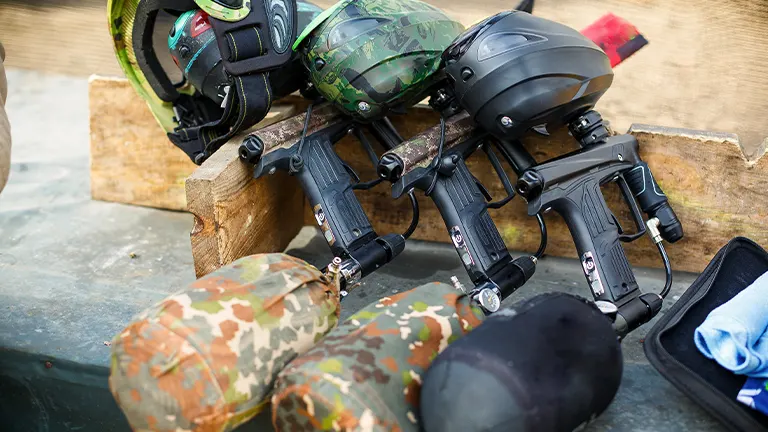Are you familiar with paintball tank hydro testing? Why should you retest the paintball cylinder every three-five years? In case you have never heard of hydro-testing, this article will provide you with all the necessary information. Read on.
What is Hydro Testing?
Hydro-testing, in simple words, determines whether the tank can safely withstand the required pressures and operates propely. This process aims to ensure that there are no leaks or deformities in the cylinder. Any leak or damage can lead to dangerous outcomes.
Therefore, the Department of Transportation (DoT) performs routine inspections of different types of pressurized cylinders to ensure operational safety.
Why Should You Hydrotest Paintball Tank?
Most high-end paintball guns are powered by two types of tanks: CO2 and compressed air HPA. The paint-filled pellets are fired out of the gun by the pressure generated by these tanks. Leaking or damaged tanks can’t produce the pressure you need, so your gun won’t function properly.
Moreover, these tanks have high-pressure CO2 or compressed air in them. The damaged paintball tank is a safety risk for you and other people playing with you. That is why most paintball establishments take this matter seriously and don’t allow any individual with a tank that hasn’t passed hydro testing.
Can You do Hydro Testing of Your Paintball Tank?
No, you can’t do paintball tank hydro testing at home. For this, you will need specialized equipment that is not readily available for anyone to buy and a professional hydro tester. Further, you will get the paintball tank stamped, indicating the test date from the hydro testing facility. This record will allow you to play in any paintball arena.
How to Tell If Your Paintball Tank Needs a Hydro Test?
Most paintball tank manufacturers have mentioned validity, hydro test schedules, and the manufacturing date. See when it should be “rehydro-ed.” Usually, it needs to be done every three to five years. Just add the recommended years to the manufacturing date for the next hydro testing.
If it was hydro-tested, consider counting years from that date instead of the manufactured date. Additionally, you can get information for hydro testing by looking at the tanks’ lifespan. If the validity date is 15 years, you should hydro-test the paintball tanks three times.

How Paintball Tanks are Hydro Tested?
Paintball tank hydro testing involves different stages. Here is the overview of how this process is done:
Physical Inspection of Paintball Tank
The first step involves a thorough examination of the paintball cylinder. The hydro tester will look for the integrity of tank threading or other damages on the outer surface. If the threading is damaged or the tank shows corrosion or dents, the hydro tester will not move to the next stage. Unfortunately, your tank will fail the hydro test for the reasons mentioned above.
Pressure Application
After passing the preliminary stage of the test, your paintball tank will be subjected to pressurized liquid. After refilling the paintball tank with colored dye and placing it in the specialized chamber or vessel, the tank will be closely observed for changes in its structure.
Every tank expands to a certain accepted limit when subjected to pressure. However, if the tank is not expanding or has crossed the specified limit, it won’t satisfy the safety parameters and hence, will fail the hydro test.
Moreover, the leak in the paintball cylinder can be visualized more easily due to the use of colored dye. If there is any such leak, the hydro tester will not clear that tank.
If your paintball tank passes the test, the hydro-testing facility will place a stamp or sticker on the cylinder mentioning the hydro-testing date.
What Are The Factors That Contribute To Hydro Test Failures?
The passing or failing of the hydro test for a CO2 or HPA tank depends on various reasons. Here are the most common ones:
- Damage to structural integrity
- Thread damage
- Surface corrosion on the interior
- The interior surface is pitted
How Much Does It Cost to Hydrotest a Paintball Tank?
Hydro-test cost depends on different factors. For instance, local service providers will charge you about $20-$40. For online hydro testing, you may include an additional $10 to $30 for shipping costs. The final cost will reach $100 or more if you change your regulator as well as paint the tank.
How To Proceed If The Hydro Test Fails
The best course is to buy paintball tanks after failing the hydro test. Most people prefer to go for new tanks instead of opting for the test due to the cost involved.
Ensuring safety should be your top priority while playing paintball. Maintaining your paintball gear is the first step toward it. This blog entry was aimed to provide relevant information about paintball tank hydro testing. I hope you get the answer to your query.

